第56章 II(40)
West's Reports, in Brit. and For. Med. Review for October, 1845, and January, 1847.--Affection of the arm, resembling malignant pustule, after removing the placenta of a patient who died from puerperal fever. Reference to cases at Wurzburg, as proving contagion, and to Keiller's cases in the Monthly Journal for February, 1846, as showing connection of puerperal fever and erysipelas.
Kneeland. --Contagiousness of Puerperal Fever. Am. Jour. Med.
Se., January, 1846. Also, Connection between Puerperal Fever and Epidemic Erysipelas. Ibid., April, 1846.
Robert Storrs. --Contagious Effects of Puerperal Fever on the Male Subject; or on Persons not Child-bearing. (From Provincial Med. and Surg. Journal.) Am. Jour. Med. Sc., January, 184,6. Numerous cases. See also Dr. Reid's case in same Journal for April, 1846.
Routh's paper in Proc. of Royal Med. Chir. Soc., Am. Jour. Med.
Sc., April, 1849, also in B. and F. Med. Chir. Review, April, 1850.
Hill, of Leuchars. --A Series of Cases illustrating the Contagious Nature of Erysipelas and of Puerperal Fever, and their Intimate Pathological Connection. (From Monthly Journal of Med. Sc.) Am.
Jour. Med. Se., July, 1850.
Skoda on the Causes of Puerperal Fever. (Peritonitis in rabbits, from inoculation with different morbid secretions.) Am. Jour. Med.
Se., October, 1850.
Arneth. Paper read before the National Academy of Medicine. Annales d'Hygiene, Tome LXV. 2e Partie. (Means of Disinfection proposed by M. "Semmeliveis" (Semmelweiss.) Lotions of chloride of lime and use of nail-brush before admission to lying-in wards. Alleged sudden and great decrease of mortality from puerperal fever. Cause of disease attributed to inoculation with cadaveric matters.) See also Routh's paper, mentioned above.
Moir. Remarks at a meeting of the Edinburgh Medico-Chirurgical Society. Refers to cases of Dr. Kellie, of Leith. Sixteen in succession, all fatal. Also to several instances of individual pupils having had a succession of cases in various quarters of the town, while others, practising as extensively in the same localities, had none. Also to several special cases not mentioned elsewhere.
Am. Jour. Med. Se. for October, 1851. (From New Monthly Journal of Med. Science.)
Simpson. --Observations at a Meeting of the Edinburgh Obstetrical Society. (An "eminent gentleman," according to Dr. Meigs, whose "name is as well known in America as in (his) native land."
Obstetrics. Phil. 1852, pp. 368, 375.) The student is referred to this paper for a valuable resume of many of the facts, and the necessary inferences, relating to this subject. Also for another series of cases, Mr. Sidey's, five or six in rapid succession.
Dr. Simpson attended the dissection of two of Dr. Sidey's cases, and freely handled the diseased parts. His next four child-bed patients were affected with puerperal fever, and it was the first time he had seen it in practice. As Dr. Simpson is a gentleman (Dr. Meigs, as above), and as "a gentleman's hands are clean " (Dr. Meigs' Sixth Letter), it follows that a gentleman with clean hands may carry the disease. Am. Jour. Med. Sc., October, 1851.
Peddle. --The five or six cases of Dr. Sidey, followed by the four of Dr. Simpson, did not end the series. A practitioner in Leith having examined in Dr. Simpson's house, a portion of the uterus obtained from one of the patients, had immediately afterwards three fatal cases of puerperal fever. Dr. Veddie referred to two distinct series of consecutive cases in his own practice. He had since taken precautions, and not met with any such cases. Am. Jour. Med. Sc., October, 1851.
Copland. Considers it proved that puerperal fever maybe propagated by the hands and the clothes, or either, of a third person, the bed- clothes or body-clothes of a patient. Mentions a new series of cases, one of which he saw, with the practitioner who had attended them. She was the sixth he had had within a few days. All died.
Dr. Copland insisted that contagion had caused these cases; advised precautionary measures, and the practitioner had no other cases for a considerable time. Considers it criminal, after the evidence adduced,--which he could have quadrupled,--and the weight of authority brought forward, for a practitioner to be the medium of transmitting contagion and death to his patients. Dr. Copland lays down rules similar to those suggested by myself, and is therefore entitled to the same epithet for so doing. Medical Dictionary, New York, 1852. Article, Puerperal States and Diseases.
If there is any appetite for facts so craving as to be yet unappeased,--Lesotho, necdum satiata,--more can be obtained.
Dr. Hodge remarks that "the frequency and importance of this singular circumstance (that the disease is occasionally more prevalent with one practitioner than another) has been exceedingly overrated." More than thirty strings of cases, more than two hundred and fifty sufferers from puerperal fever, more than one hundred and thirty deaths appear as the results of a sparing estimate of such among the facts I have gleaned as could be numerically valued. These facts constitute, we may take it for granted, but a small fraction of those that have actually occurred. The number of them might be greater, but "'t is enough, 't will serve," in Mercutio's modest phrase, so far as frequency is concerned. For a just estimate of the importance of the singular circumstance, it might be proper to consult the languid survivors, the widowed husbands, and the motherless children, as well as "the unfortunate accoucheur."